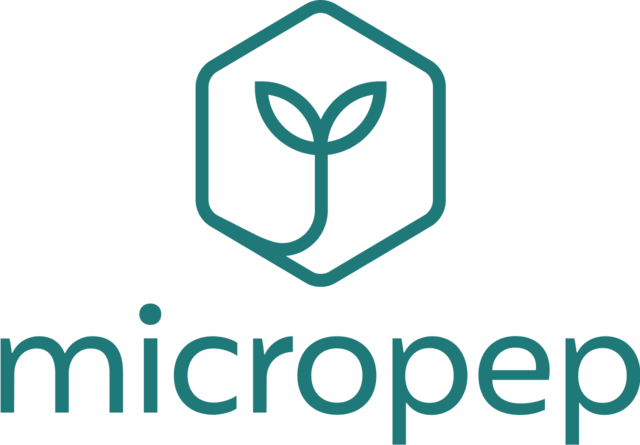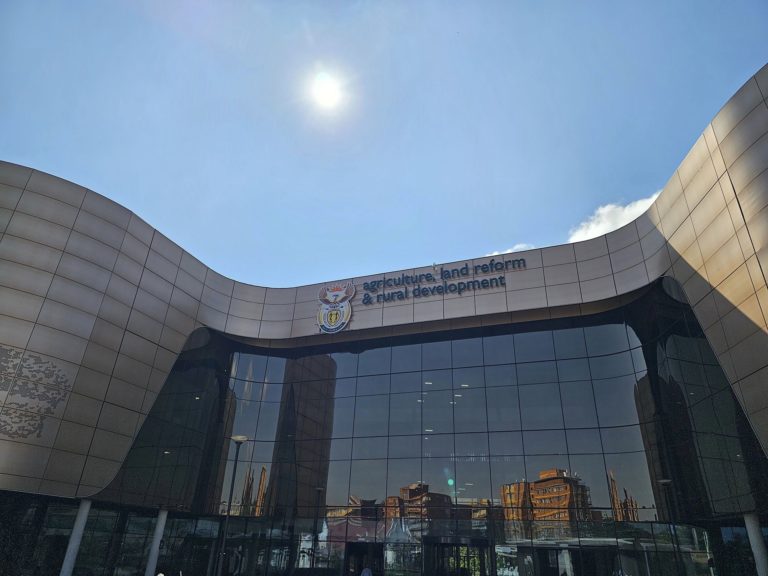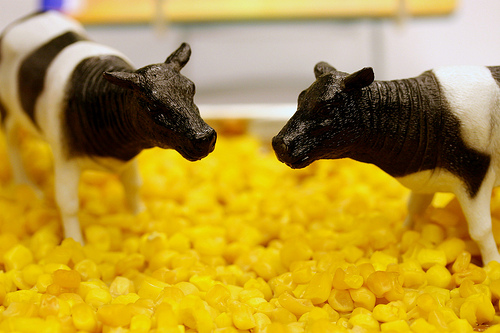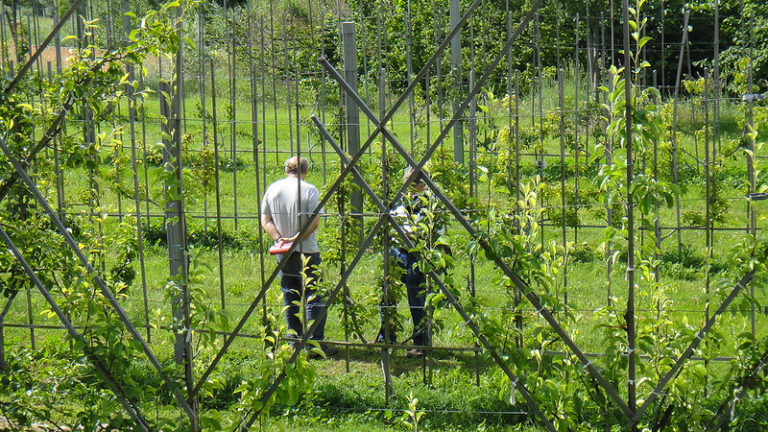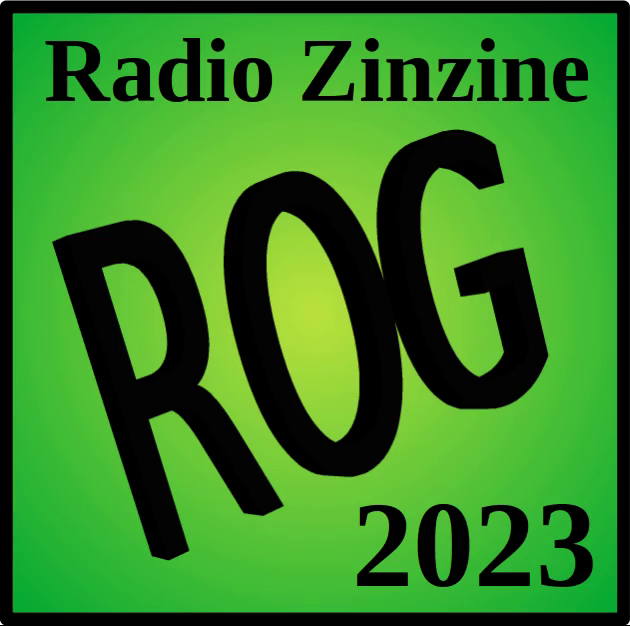Actualités
Detection of new GMOs : not a priority for the Commission

Between 2013 and 2021, the European Commission has repeatedly refused to allow its experts to carry out an effective research and experimentation program on the detection and traceability of new GMOs. Yet, this is a key issue: the GMO legislation requires that all GMOs be detectable and traceable.
For years, the question of the ability to detect and trace new GMOs has been at the center of the debate on the possibility of regulating them. At the last European Council of Ministers of Agriculture, several Member States once again claimed that such traceability was impossible. For its part, the European Commission justified, in its letter to Portugal of April 29, 2021, its desire to modify the GMO regulation by stating that « under the current EU regulatory system, there are implementation and enforcement challenges, in particular related to the detection and differentiation of NGT products that do not contain any foreign genetic material”. This statement paradoxically contradicts its answers to its scientific experts wishing to conduct a research program on this issue, to whom it explained that the question of their legal status had to be decided first. Indeed, the European committee of experts specialized in the questions of detection and traceability of GMOs has only been officially mobilized once, for a “simple” report written in a manner that is not very independent of politics, as we shall see.
Almost ten years of debate
In September 2014, the topic of detection and traceability of products obtained by new techniques of genetic modification is raised for the first time in the European Network of Laboratories (ENGL), at least since June 2013, when the minutes of this network’s meetings were made publicly available online [1]. At that meeting, members propose that detection should be one of the themes of the December 2014 ENGL annual plenary meeting, a proposition which will be accepted. At that time, the European Commission had initiated a very informal debate on the status of products from new techniques with respect to GMO regulation. The ENGL concludes its 2014 plenary [2] by stating that “it is premature to establish an ENGL working group on the topic since the defining of the legal aspects is still underway”. The idea of organizing a thematic workshop to discuss detection and distinction techniques and strategies is proposed, but this idea will not be pursued. The ENGL merely proposes to invite an external expert for an exchange. But the year 2015 passes and the ENGL writes, as surprising as it may seem, that “no suitable speaker on new breeding techniques was found for the meeting” [3].
The subject then comes up again in April 2016, during an ENGL plenary meeting with a presentation addressing “the fact that (New Breeding Techniques) can make genome variations indistinguishable from natural variations and from variations introduced by conventional breeding and chemical or physical mutagenesis” [4]. The experts’ discussions ends with the conclusion that “their detection will pose new challenges for the control laboratories. In this sense, the ENGL can contribute by raising awareness on this issue and by sharing ideas and information available”. Once again, no follow-up is given by the European Commission to this suggestion, even though it is drawing up its own interpretation of the GMO legislation in order to know whether or not these new techniques should be subject to the law’s requirements. Three months later, the ENGL sets up an internal electronic discussion forum on the Crispr technology and detection, the content and possible summary of which are not accessible on the ENGL website [5].
ENGL experts sidelined by the Commission
In order not to contradict the Commission’s delaying behaviour, the ENGL members consider in September 2016 that it is “too premature to start a (working group) on New Breeding Techniques, but (ENGL will) continue monitoring the evolution in this field” [6]. Yet, during a scientific and technical session on the Bio-economy organized at the same meeting, it is specified that “Whatever legal system of regulation is applied, methods for monitoring (detection, identification, quantification) will remain relevant and the ENGL should continue to play an authoritative role in this field”. For the ENGL, the question of the traceability of these products is therefore independent of their legal status. This observation reinforces the ENGL’s desire to look into the subject and, even if it considers a working group premature, leads it to recall that “ENGL could be of great value in addressing the issue”. Does this paradox reflect differing views within the ENGL?
In November 2016, the Scientific Advice Mechanism (SAM), a group of seven persons appointed to provide “independent scientific advice to the European Commission to inform policy making”, was mandated to write a state of the art on these new techniques. In the mission statement, it is clearly stated that the SAM will assess “possibilities for detection of the respective products” obtained through the use of new breeding techniques. The seven members of the SAM, none of whom were experts in GMO detection, are thus entrusted with a mission that was previously refused to experts in this discipline at the ENGL… And this referral becomes a pretext for further delaying a possible work of the ENGL, as was already the referral to the Court of Justice of the European Union in October 2016 by the French Council of State on the legal status of the new mutagenesis techniques using genetic engineering.
In 2017, the Commission objected to a dedicated work
According to the minutes of ENGL meetings, the European Commission had been simply until 2016 not responding to repeated ENGL suggestions. But during the ENGL plenary meeting in April 2017, it is for the fourth time stressed that ENGL can “play a role in the discussion on detectability of new organisms generated with new techniques” [7]. The European Commission openly refuses this time. It underlines that “ENGL is a very important network, but that the Commission decided to have a more open debate on this issue looking into the future from a broader perspective”. It was at this time, however, that the SAM submitted its study, which concluded that “it is generally impossible to distinguish the cause of such changes as natural or resulting from the employment of any breeding technique”. Inf’OGM pointed out that this conclusion of the report is contradicted by the scientific data provided in the same report [8] !
Despite of the Commission’s refusal, the members of the ENGL mention some ideas of work. They consider that “SNP – Single Nucleotide Polymorphism – detection and quantification for gene editing” are… topics. They also discuss “the usefulness of addressing analytical solutions for detecting products derived from synthetic biology or new breeding techniques” and suggest “continuing the discussion” internally via electronic means. While these discussions show that there were – and still are – tracks to explore, the members seemed to be well aware of the European Commission’s refusal to see them pursue this topic further.
The last ENGL meeting of the year, in September 2017, is an opportunity to discuss about a tomato genetically modified using Crispr/Cas9 to obtain “an equivalent of natural mutants”. The minutes, far from affirmative, state that “apparently it is still impossible to distinguish in the progeny the natural from the induced mutant” [9].
In 2018, a report is commissioned by the Commission
On July 25, 2018, when the Court of Justice of the European Union issues its ruling, the Commission has no theoretical or experimental data from its experts on the subject. This lack of anticipation since the emergence of the debate in 2008 contrasts with the tight timetable it imposes then. Indeed, in October 2018, the Commission mandates – at last – its experts from the European Union Reference Laboratory for GM Food & Feed (EURL-GMFF) (see box below) and from ENGL to obtain a report on “the possibilities and challenges for the detection of food and feed plant products obtained by new directed mutagenesis techniques” [10]. Ironically, the Commission is now encouraging ENGL members at the same meeting “encouraged the participants in voicing their difficulties and concerns not only to the Commission, but also to their Competent Authorities” about the implementation of the CJEU ruling. As if the Commission is more interested in concerns than in the feasibility of this traceability…
ENGL, EURL-GMFF, JRC, SAM…
The European Network of GMO Laboratories (ENGL) brings together representatives of national laboratories of the Member States, specialized in the detection and traceability of GMOs. This network supports the work of the European Reference Laboratory, EURL-GMFF.
The European Union Reference Laboratory for GMO Food and Feed (EURL-GMFF) is a research laboratory, hosted by the Joint Research Centre in Ispra, Italy.
The Joint Research Centre (JRC) is a scientific service of the European Commission. It conducts research with its scientists in order to provide scientific advice and support to EU policies related to Research.
The Science Advisory Mechanism (SAM) (also called the Group of Chief Scientific Advisors) is attached to the European Commission to provide independent scientific advice to the European Commission to inform policy making and recommendations to improve the interaction between policy-making and scientific advice.
But it is above all another publication from the same period that raises questions. At the time when the Commission finally mandates its experts, an “explanatory note” dated from October 2018, co-signed by Wim Broothaerts (employee of the GMO producing company, Dupont Pioneer, at the time of the publication and former member of the Joint Research Centre (JRC) of the European Commission) and by three members of the JRC was published on the internet. This article, which has since been unpublished but is still available on the Inf’OGM website [11], concludes that it is impossible to trace the new GMOs. This publication shows that the Commission already has a very precise idea of the answer it expects from its experts…
During the meeting at which the European Commission officially committed the ENGL to look into the question of traceability [12], “a draft explanatory note” is discussed, presented as having been drafted by the EURL-GMFF. It is possible that this is the article published on the internet in November. The minutes of the meeting state that “Some participants considered the document and especially the executive summary as too optimistic and suggested a modification of the latter”. Other comments on the real feasibility and the cost/benefit ratio of certain approaches or the impossibility of quantifying the mutations obtained by the new techniques are also mentioned. Finally, it is pointed out that some participants remark that a section of the note”should be rewritten to avoid interpreting it as a feasible solution« . A surprising statement because, on the scientific level alone, a solution is either feasible or it is not…
It is especially astonishing to note that in the same month in which the experts have – at last – received an official mandate from the Commission to produce a report on the detection and traceability of the products of new mutagenesis techniques, the discussions are already rewriting parts that are judged too optimistic…
The ENGL report is published in March 2019 [13], four months after it was commissioned. As Inf’OGM pointed out at the time of its publication, it gives “arguments both to those who claim that it is not possible to trace new GMOs and to those who claim that it is possible on the condition that the European Union wants it” [14]. Above all, it states in its introduction that “at the current state, own experimental work on detectability of genome-edited food or feed products of plant origin has not been conducted”…
But the ENGL experts did not work alone to draft it. The minutes of the February 2019 meeting tell us that the European Commission, via its DG Health, “actively participated to the elaboration of this document, both in the physical meeting of the drafting group organised by the JRC and in the electronic discussions of the drafting group” [15]. With an explanatory note co-signed by the European Commission and a company and an active participation of the Commission in the report of its experts, all in four months, one could almost wonder how independent the latter really are…
Since 2019, discussions but no study commissioned!
After the publication of their report, the ENGL experts continue to discuss the detection / traceability of GMOs obtained by the new techniques. But no response is given to their strong suggestion to implement experimental studies. Politicians and industrialists, meanwhile, continue to assert that it is impossible to trace the new GMOs.
In June 2019, the Belgian member of ENGL suggests having “off-targets effects with CRISPS/Cas to better identify GE products and the use of (new genomic sequencing) for GMO detection” on the agenda of the plenary meeting [16]. The minutes of the same meeting indicate that an internal ENGL working group is formed to update the ENGL guidelines on minimum performance requirements for detection methods. The mandate then provided to this group mentions that it should “review, and if necessary amend, the current version of the method acceptance criteria and performance requirements document for its applicability to PCR methods for detection, identification and quantification of food and feed products obtained by new mutagenesis techniques” [17]. This work is still in progress today and could include “other detection principles available on the market (or) digital PCR” as proposed by the Italian and Slovenian representatives a few months before [18].
During an ENGL meeting in October 2019 [19], we learn that for some of its members, new sequencing techniques would allow the detection of “genome edited products” when others consider that this would be complicated to implement on mixtures of different products. If, during the same meeting, an external expert, invited by the ENGL, asserts head-on that genetically edited products should be considered as non-GMO, another invited expert considers that it is possible to differentiate technically-induced mutations from natural mutations by looking at the genome as a whole. Indeed, he considers that “deep analysis of mutations (…) could provide approaches for comprehensive fingerprinting. Somatic mutations occurring (…) as a result of the transformation process might be exploited for unique fingerprinting of authorised events”, especially since if some unwanted mutations can disappear during crossings, others remain. In simpler terms, tracing GMOs could be done by following in the genome the signatures of the techniques used.
Experts return to the charge… for an umpteenth refusal!
In February 2020, the services of the European Commission are working on the draft of the study requested in November 2019 by the Member States on the legal status of products obtained by the new techniques. In the same month, at an ENGL meeting, the German representative to ENGL asks “whether activities are expected at the ENGL level for supporting this study of the Commission” [20]. The ENGL member chairing the meeting – and not the Commission itself – replies that the ENGL report released in March 2019 on detection/traceability is sufficient but “promised enquiring DG RTD on research projects possibly covering the subject”. A response that thus adds to the now long list of polite refusals…
This umpteenth refusal to engage in concrete work does not prevent the Slovenian representative from pointing out in turn that “research projects are necessary to address the detection of GE products at experimental level”. The Chairman of the meeting replies that it is preferable to wait for the draft legislative proposal resulting from the study of the Commission services.
Four months later, in June 2020, an update is given on the progress of the working group dedicated to updating the guidelines on the minimum performance requirements of detection methods. We learn that after a year of discussion, it has been decided to define three categories of genetic modifications: mutations “up to 3 nucleotides, small insertions or deletions, and big deletions/insertions” [21]. Categories for which some approaches of new genomic sequencing techniques could detect genetically modified products. On the other hand, the question of differentiating these products from natural or conventional products is not mentioned… Above all, it is specified that the working group’s “current input could only be regarded as theoretical, since it did not have experience in analysing these types of GMOs”…
No funds from the Commission to subsidize an experimental study!
In March 2021, the European Commission presents to the ENGL the entry into force of the European transparency regulation. On this occasion, the German representative recalls “the need for obtaining experimental data on detection of (new genomic techniques) products” [22]. This transparency regulation, he points out, emphasizes the need for independent studies. He therefore asks the Commission “whether a budget could be provided for supporting studies on (new genomic techniques) detection”. The answer is clear. The Commission indicates that this regulation focuses on safety and risk assessment. In other words, no, there will be no budget for the detection and traceability of new GMOs. While the Commission does not provide an answer on other possible funding mechanisms, the Chairman of the meeting specifies that “proposals for new research programs could be submitted to Horizon Europe”. According to him, “it could be extremely helpful if proposals are coming directly from the (Member States)”. A pragmatic observation contrasting with the European Commission’s inaction on the subject.
This refusal is paradoxically expressed during a meeting where the need to produce additional data is once again explicitly stated. The working group dedicated to updating the guidelines on the minimum performance requirements of detection methods reports, for example, that”more efforts are necessary for proving that a method is event-specific, especially for NGT events carrying alterations similar to known mutations or with short sequence modifications”. More effort needed, experts say, but no fund provided by the politics…
What can we conclude from this soap opera?
For the past ten years, pro-GMO companies have been asking to exempt new techniques of genetic modification from the scope of the European legislation on GMOs. To justify this request, they claim that, unlike transgenic GMOs, new GMOs are not distinguishable from products obtained by traditional techniques, or even from natural products, and that there is therefore no reason to apply regulations to them different than the one applied to traditional or natural products. Has this argument of the companies turned into a useful conviction of the European Commission? The only factual observation that can be made is that for the last eight years, the European Commission has refused any extensive experimental work by its own detection experts. Then, after eight years, it has just proposed to deregulate these GMOs [23], based on a study of its services underlining that the traceability of the new GMOs would be a problem because certain “alterations” of the genome could be obtained by conventional methods… It seems obvious that the development of traceability processes would be the pebble in the shoe that would call into question the whole industrial narrative!
[1] The minutes of the ENGL meetings can be found in this webpage, https://gmo-crl.jrc.ec.europa.eu/ENGL/ENGL-meetings.html
[2] Meeting of 1-2 December 2014
[3] Meeting of 22-23 September 2015
[4] Meeting of 13-14 April 2016
[5] Meeting of 21-22 June 2016
[6] Meeting of 21-22 September 2016
[7] Meeting of 6-7 April 2017
[9] Meeting of 20-21 September 2017
[12] Meeting of 2-4 October 2018
[13] Detection of food and feed plant products obtained by new mutagenesis techniques (https://gmo-crl.jrc.ec.europa.eu/doc/JRC116289-GE-report-ENGL.pdf)
[15] Meeting of 19-20 February 2019
[16] Meeting of 18-19 June 2019
[17] ENGL, Working Group on Method Performance Requirements (WG-MPR), mandate : https://gmo-crl.jrc.ec.europa.eu/ENGL/docs/ENGL-WG-MPR2019-Mandate.pdf
[18] Meeting of 19-20 February 2019
[19] Meeting of 1-2 October 2019
[20] Meeting of 18-19 February 2020
[21] Meeting of 23 June 2020
[22] Meeting of 10 March 2021







